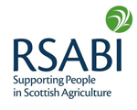Factors Influencing the Decision to Reseed
Initially, several factors govern the decision to reseed a pasture. These include how many more years the field is intended to produce and the future use required of the sward. It may be needed for grazing, cutting, a combination of both, or perhaps to include a wildlife sanctuary aspect.
Causes of Declining Pasture Performance
Basically, as a pasture ages it becomes less responsive to fertiliser application leading to decreased stock production. Initially one must determine if this is the result of soil conditions, exposure or as in most cases the ingress of weed grasses such as annual meadow grass, which do not respond to fertiliser applications and broad-leaved weeds. Alternatively, if the field under conservation is on heavy wet land, compaction may well be the cause of reduced performance. If so, sub soiling is worthy of consideration.
Assessing Current Sward Performance
It is essential to compare the current performance of the sward with previous years. This can be achieved by recording grazing days or stock carrying capacity. The estimated tonnage of first cut silage, where appropriate. Beef producers can weigh stock weekly or at turn out and again on rehousing. The dairy man can predict any reduction in pasture performance as it is highlighted in the bulk tank each day.
Benefits of Reseeding
There are innumerable benefits accruing from reseeding a worn out pasture. These include improved yields, which reduce the need for bought in feed. Improved productivity by enhanced digestibility and disease resistance. Enhanced palatability, digestibility and protein levels. The improved response to fertiliser applications are gratifying and it also culminates in greatly extended grazing.
The Role of Improved Grass and Clover Varieties
Grass breeders are consistently improving individual grass and clover varieties. These have been estimated to lead to anything in excess of £500 per acre from the potential extra milk production. These varieties can lead to increased yields of 33% in a typical 5 year ley, over the next years dry matter can be 5% higher.
Recommended Procedure for Reseeding
When the decision has been made to reseed, the following procedures are recommended:
- The soil test having been taken then correcting pH or any nutrient deficiency which have been highlighted.
- Check on any sub soil compaction resulting from machinery use or continual animal grazing. Both can cause a compaction layer but at different depths. These can be corrected by sub soiling or plough depending on the requirements.
- If no compaction is present one can plough after burning off the old sward chemically if desired.
- Sow in Spring once the soil temperature has increased and there is sufficient moisture or, alternatively sow in Autumn preferably by the end of August, especially if clovers are to be established. Alternatively no later than end of September.
- Cultivate to create a fine firm seed bed then sow no deeper than 15mm and ensure good seed to soil contact. Ideally one must sow into a warm moist seed bed.
- After sowing, the field should be Cambridge rolled to consolidate the seed bed, noting how essential this process is.
- Thereafter once the new sward emerges, monitor for frit fly, leather jackets and wire worm infestation.
- Check regularly for slug activity and as with above pests treat if required.
- Control broad leaved weeds like chickweed with light sheep grazing or suitable weed killers.
- Early management of the new sward is paramount to ensure excellent tillering. Grazing rather than cutting is by far the best option, if it is at all possible.
Cost Considerations
The costs involved in reseeding a pasture are considerable. Soil testing, lime and fertiliser costs, chemical sprays, machinery and cultivation costs. These represent a large capital expenditure but, the cost of not reseeding is considerably higher. The increased production which accrues is vastly repaid in greatly enhanced profitability.




